Abstract
Extracellular proteins produced by Bacillus cereus B-4ac were separated by chromatography on Amberlite CG-400, QAE-Sephadex, Sephadex G-75, and hydroxylapatite. A fraction, containing three detectable antigens, obtained from chromatography on hydroxylapatite caused fluid accumulation in ligated rabbit ileal loops, was dermonecrotic to rabbit skin, was cytotoxic to cultured cells, and was lethal to mice after intravenous injection. Two other fractions obtained from chromatography on hydroxylapatite showed essentially no toxic activity when tested individually. Each nontoxic fraction contained two of the three proteins present in the toxic material. When the two nontoxic fractions were combined, activity in all of the biological assays was observed. Antiserum against either of the nontoxic fractions neutralized the dermonecrotic response of the combined material. These results suggest that all of these biological activities probably are due to a single entity and that more than one component probably comprise the toxic entity.
Full text
PDF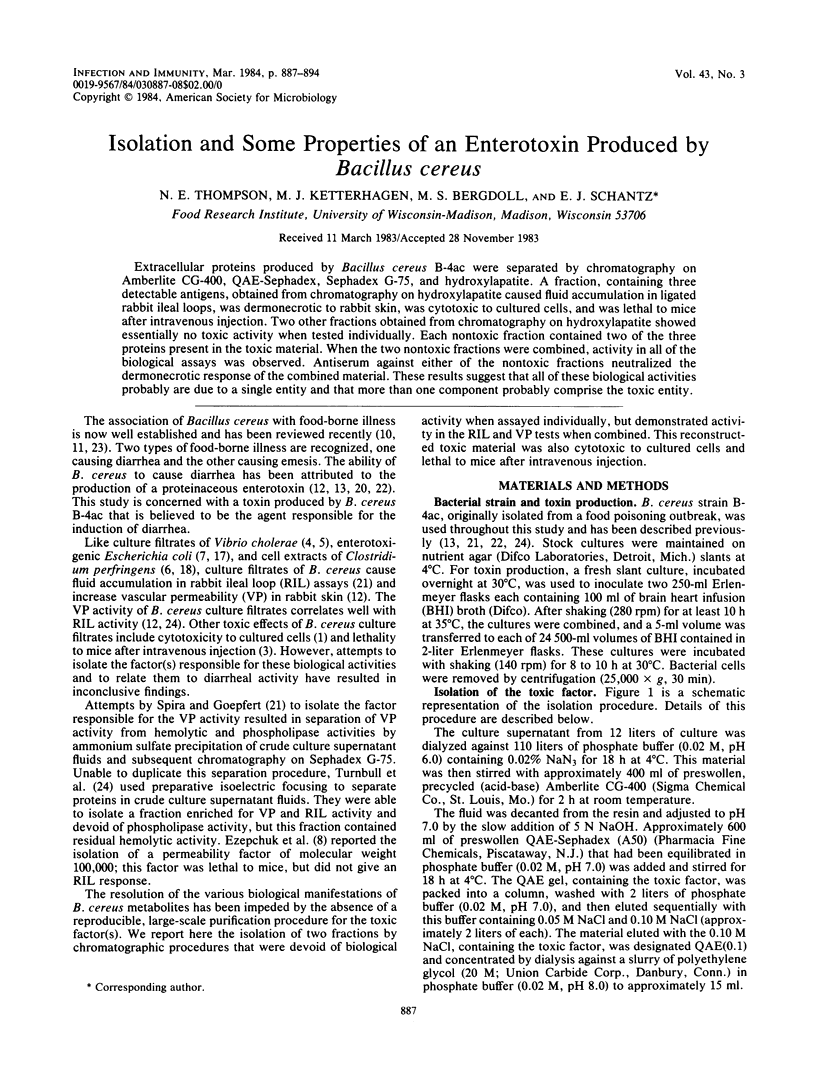
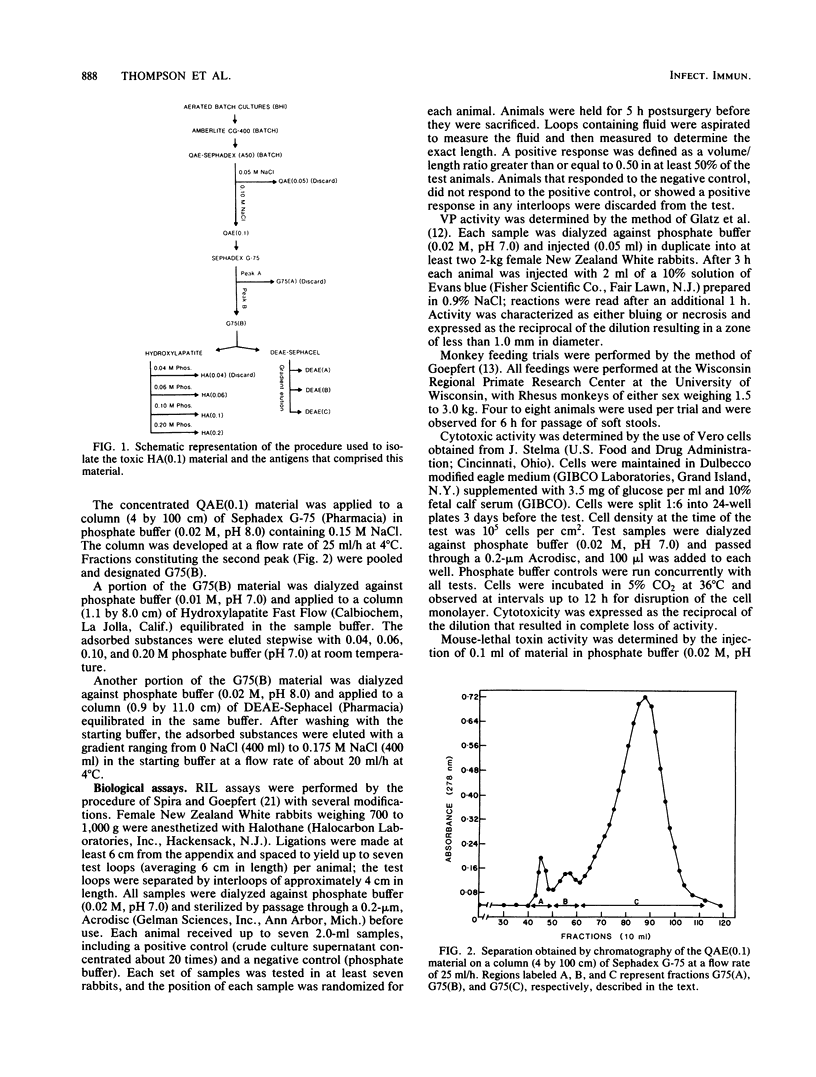
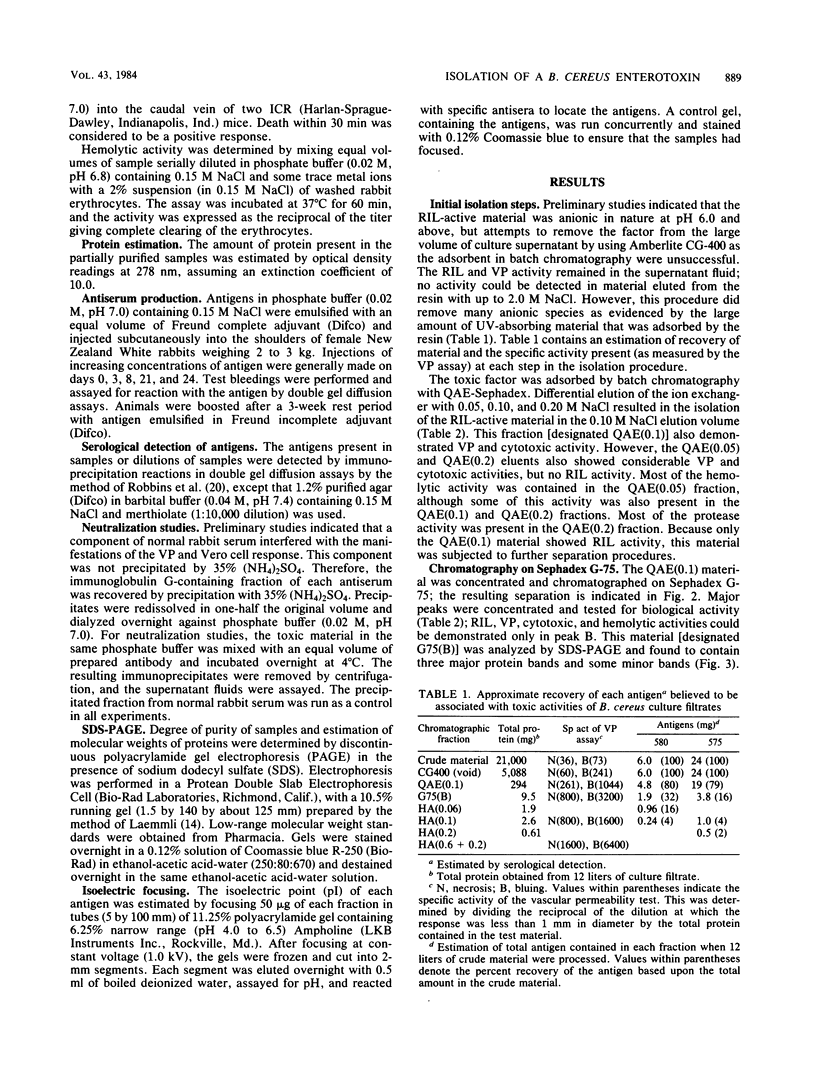
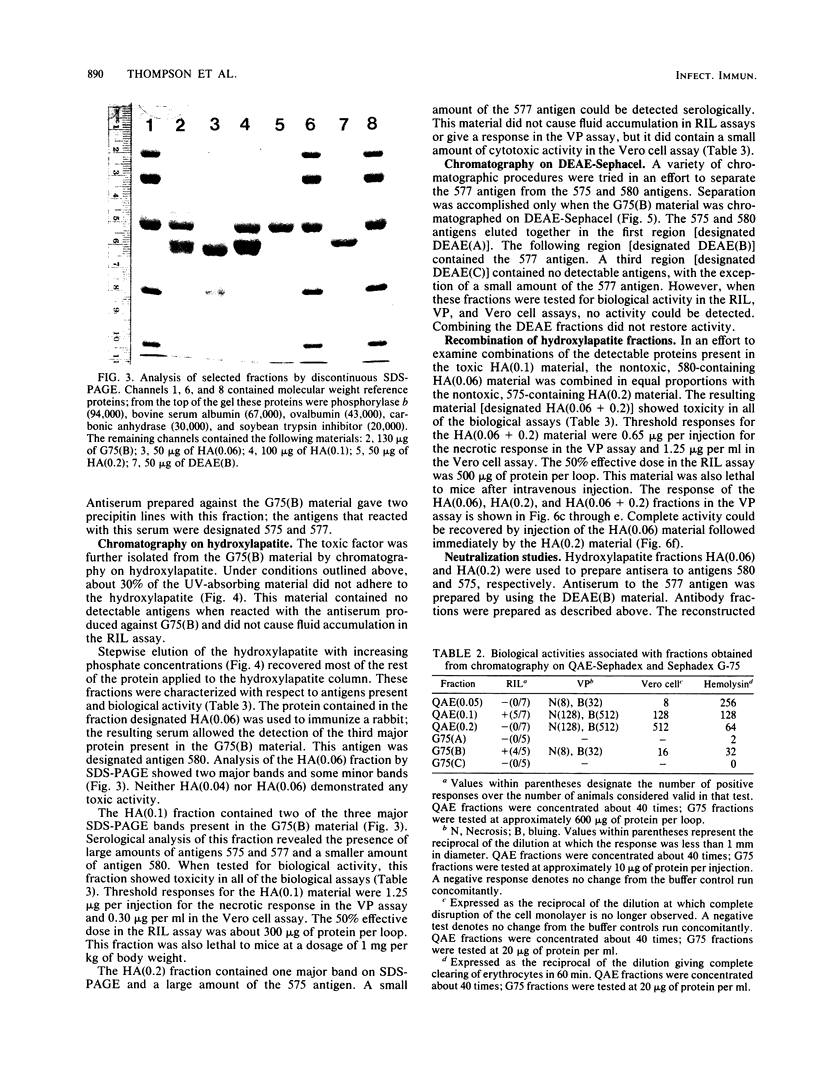
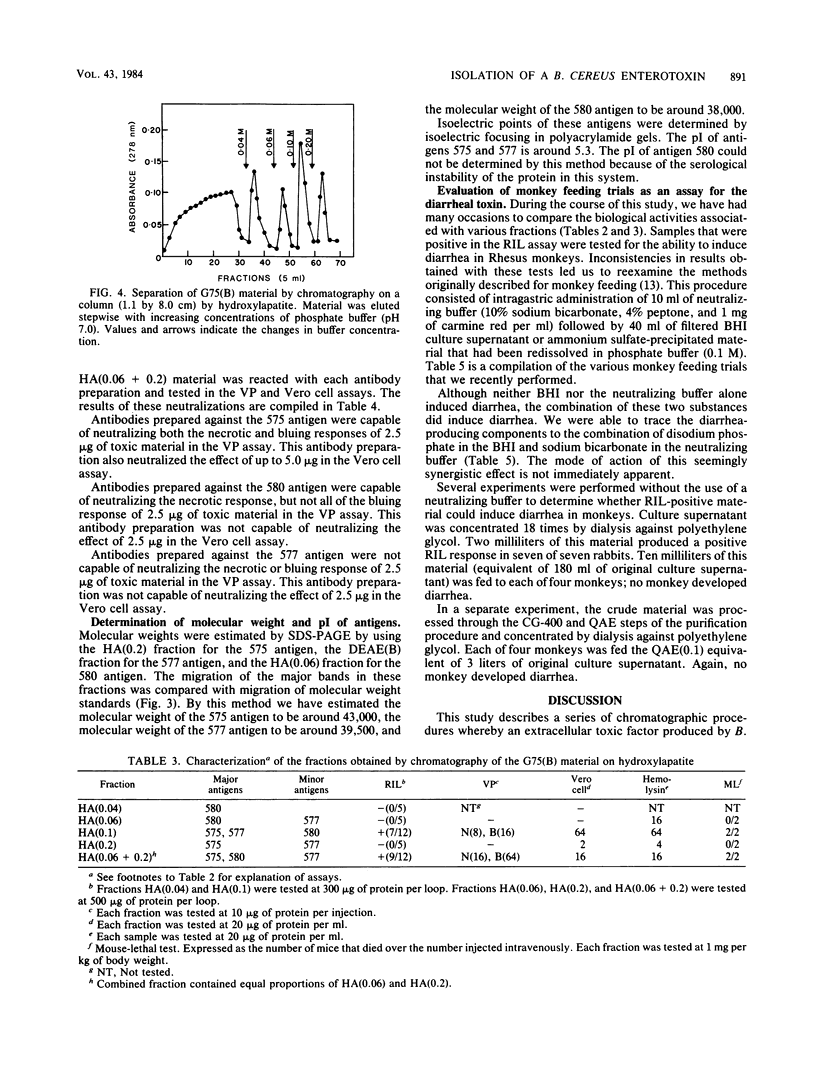
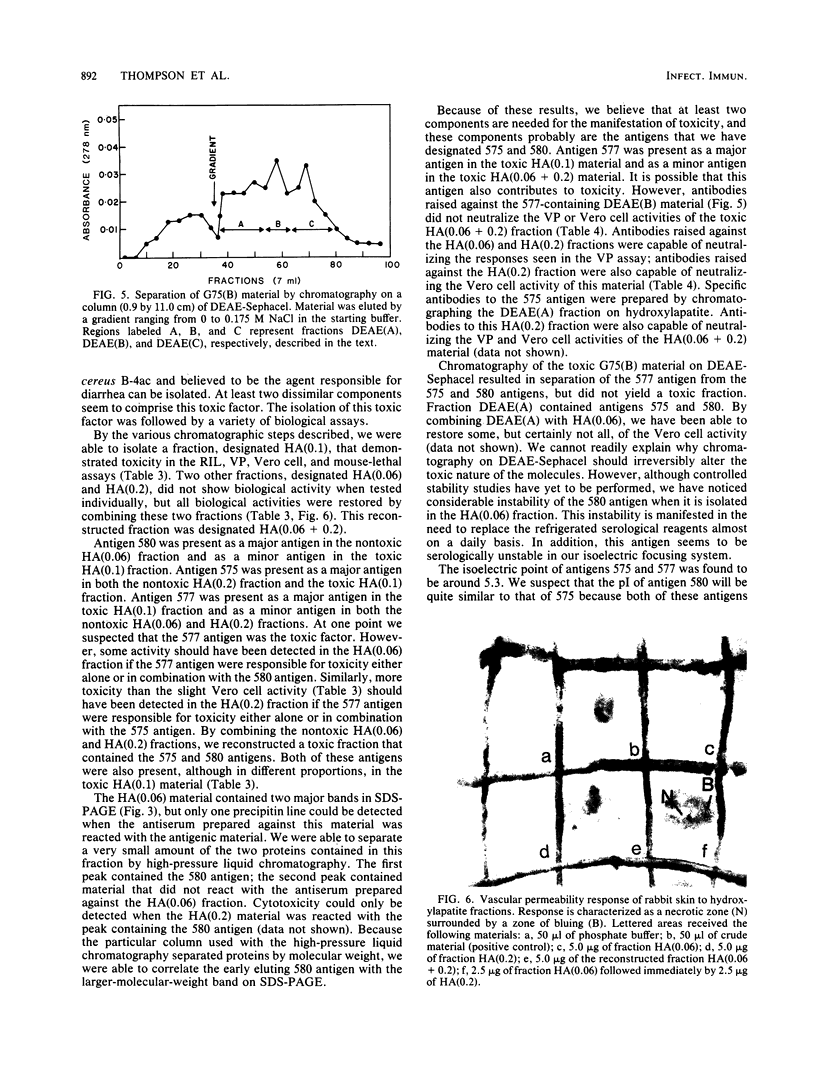
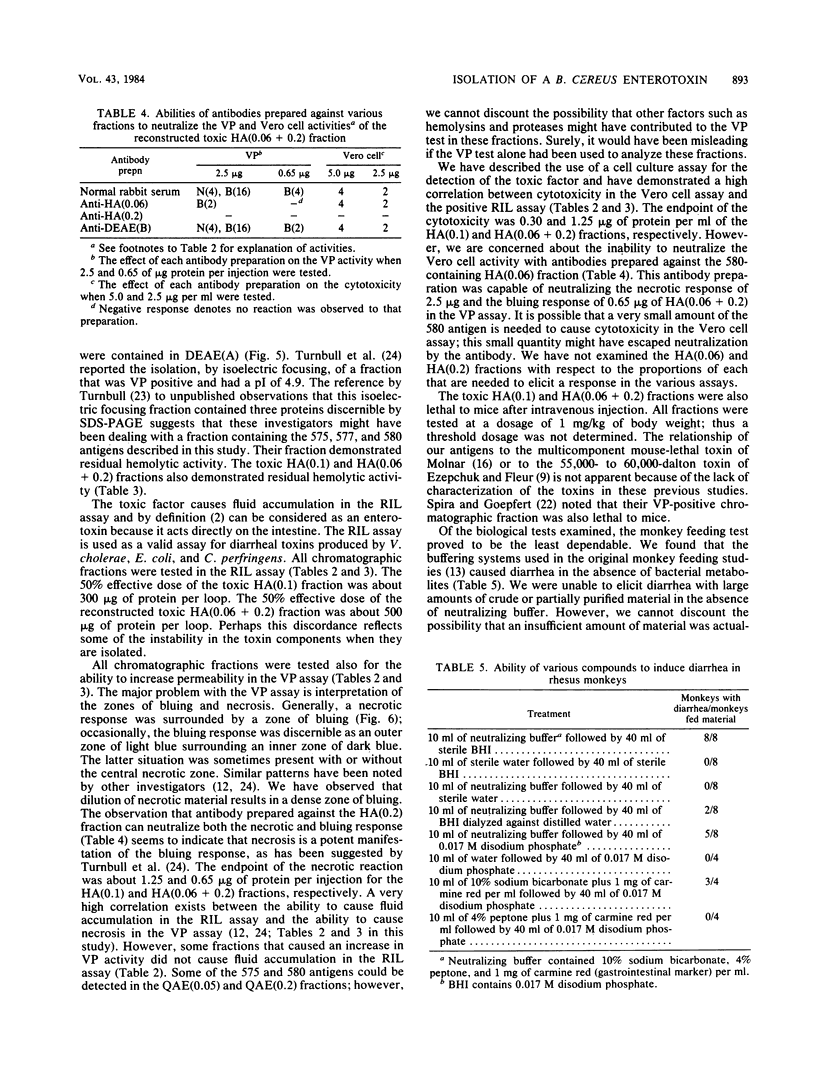
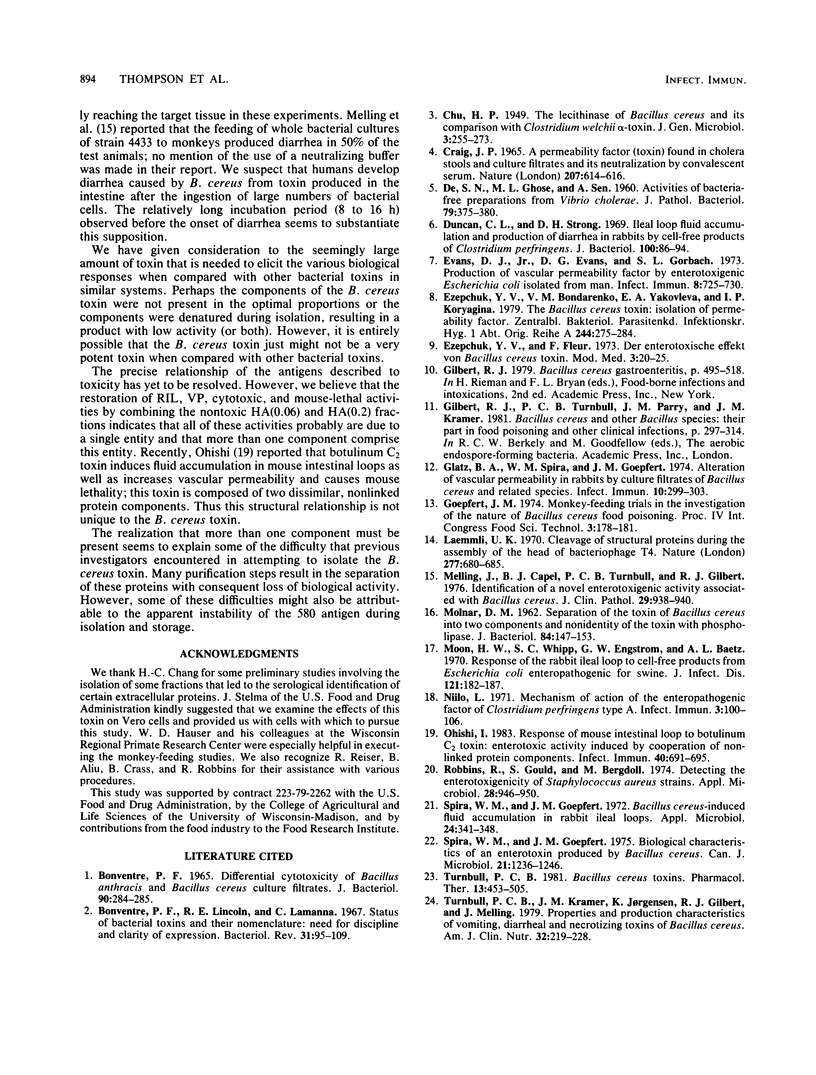
Images in this article
Selected References
These references are in PubMed. This may not be the complete list of references from this article.
- Bonventre P. F. Differential Cytotoxicity of Bacillus anthracis and Bacillus cereus Culture Filtrates. J Bacteriol. 1965 Jul;90(1):284–285. doi: 10.1128/jb.90.1.284-285.1965. [DOI] [PMC free article] [PubMed] [Google Scholar]
- Bonventre P. F., Lincoln R. E., Lamanna C. Status of bacterial toxins and their nomenclature: need for discipline and clarity of expression. Bacteriol Rev. 1967 Jun;31(2):95–109. doi: 10.1128/br.31.2.95-109.1967. [DOI] [PMC free article] [PubMed] [Google Scholar]
- Craig J. P. A permeability factor (toxin) found in cholera stools and culture filtrates and its neutralization by convalescent cholera sera. Nature. 1965 Aug 7;207(997):614–616. doi: 10.1038/207614a0. [DOI] [PubMed] [Google Scholar]
- DE S. N., GHOSE M. L., SEN A. Activities of bacteria-free preparations from Vibrio cholerae. J Pathol Bacteriol. 1960 Apr;79:373–380. doi: 10.1002/path.1700790219. [DOI] [PubMed] [Google Scholar]
- Duncan C. L., Strong D. H. Ileal loop fluid accumulation and production of diarrhea in rabbits by cell-free products of Clostridium perfringens. J Bacteriol. 1969 Oct;100(1):86–94. doi: 10.1128/jb.100.1.86-94.1969. [DOI] [PMC free article] [PubMed] [Google Scholar]
- Evans D. J., Jr, Evans D. G., Gorbach S. L. Production of vascular permeability factor by enterotoxigenic Escherichia coli isolated from man. Infect Immun. 1973 Nov;8(5):725–730. doi: 10.1128/iai.8.5.725-730.1973. [DOI] [PMC free article] [PubMed] [Google Scholar]
- Ezepchuk Yu V., Bondarenko V. M., Yakovleva E. A., Koryagina I. P. The bacillus cereus toxin: isolation of permeability factor. Zentralbl Bakteriol Orig A. 1979 Jul;244(2-3):275–284. [PubMed] [Google Scholar]
- Glatz B. A., Spira W. M., Goepfert J. M. Alteration of vascular permeability in rabbits by culture filtrates of Bacillus cereus and related species. Infect Immun. 1974 Aug;10(2):299–303. doi: 10.1128/iai.10.2.299-303.1974. [DOI] [PMC free article] [PubMed] [Google Scholar]
- Laemmli U. K. Cleavage of structural proteins during the assembly of the head of bacteriophage T4. Nature. 1970 Aug 15;227(5259):680–685. doi: 10.1038/227680a0. [DOI] [PubMed] [Google Scholar]
- MOLNAR D. M. Separation of the toxin of Bacillus cereus into two components and nonidentity of the toxin with phospholipase. J Bacteriol. 1962 Jul;84:147–153. doi: 10.1128/jb.84.1.147-153.1962. [DOI] [PMC free article] [PubMed] [Google Scholar]
- Melling J., Capel B. J., Turnbull P. C., Gilbert R. J. Identification of a novel enterotoxigenic activity associated with Bacillus cereus. J Clin Pathol. 1976 Oct;29(10):938–940. doi: 10.1136/jcp.29.10.938. [DOI] [PMC free article] [PubMed] [Google Scholar]
- Moon H. W., Whipp S. C., Engstrom G. W., Baetz A. L. Response of the rabbit ileal loop to cell-free products from Escherichia coli enteropathogenic for swine. J Infect Dis. 1970 Feb;121(2):182–187. doi: 10.1093/infdis/121.2.182. [DOI] [PubMed] [Google Scholar]
- Niilo L. Mechanism of Action of the Enteropathogenic Factor of Clostridium perfringens Type A. Infect Immun. 1971 Jan;3(1):100–106. doi: 10.1128/iai.3.1.100-106.1971. [DOI] [PMC free article] [PubMed] [Google Scholar]
- Ohishi I. Response of mouse intestinal loop to botulinum C2 toxin: enterotoxic activity induced by cooperation of nonlinked protein components. Infect Immun. 1983 May;40(2):691–695. doi: 10.1128/iai.40.2.691-695.1983. [DOI] [PMC free article] [PubMed] [Google Scholar]
- Robbins R., Gould S., Bergdoll M. Detecting the enterotoxigenicity of Staphylococcus aureus strains. Appl Microbiol. 1974 Dec;28(6):946–950. doi: 10.1128/am.28.6.946-950.1974. [DOI] [PMC free article] [PubMed] [Google Scholar]
- Spira W. M., Goepfert J. M. Bacillus cereus-induced fluid accumulation in rabbit ileal loops. Appl Microbiol. 1972 Sep;24(3):341–348. doi: 10.1128/am.24.3.341-348.1972. [DOI] [PMC free article] [PubMed] [Google Scholar]
- Spira W. M., Goepfert J. M. Biological characteristics of an enterotoxin produced by Bacillus cereus. Can J Microbiol. 1975 Aug;21(8):1236–1246. doi: 10.1139/m75-185. [DOI] [PubMed] [Google Scholar]
- Turnbull P. C. Bacillus cereus toxins. Pharmacol Ther. 1981;13(3):453–505. doi: 10.1016/0163-7258(81)90026-7. [DOI] [PubMed] [Google Scholar]
- Turnbull P. C., Kramer J. M., Jørgensen K., Gilbert R. J., Melling J. Properties and production characteristics of vomiting, diarrheal, and necrotizing toxins of Bacillus cereus. Am J Clin Nutr. 1979 Jan;32(1):219–228. doi: 10.1093/ajcn/32.1.219. [DOI] [PubMed] [Google Scholar]




